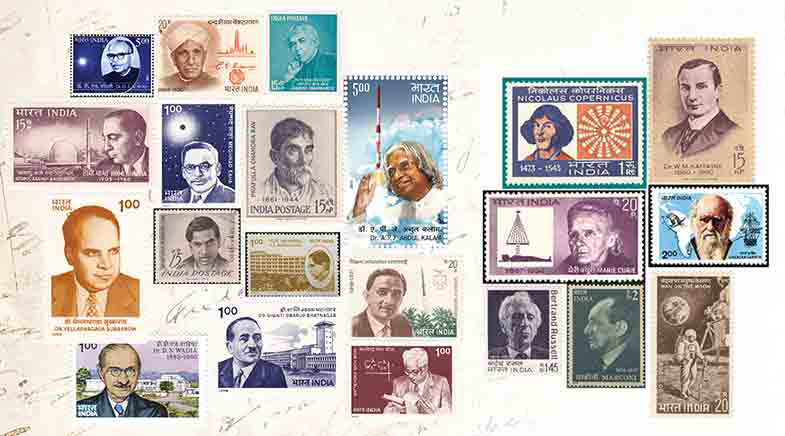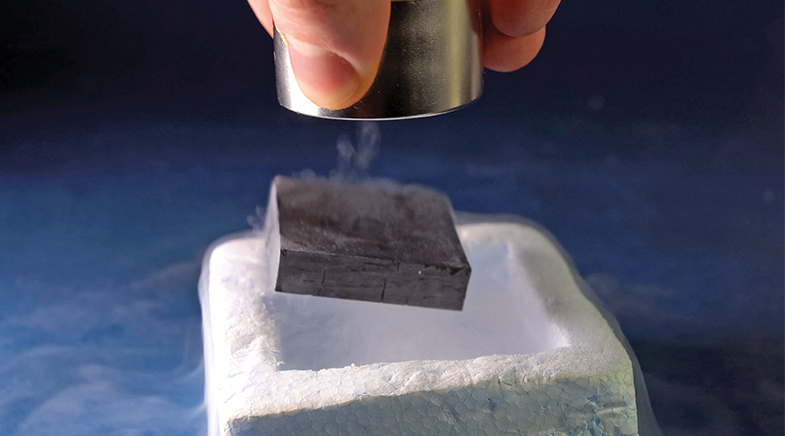Stamp of honour
-
- from Shaastra :: vol 01 issue 04 :: Jul - Aug 2022

A glimpse of science milestones, as seen through the prism of philately.
Over the years, the Indian Postal Service has issued stamps across many themes. From an initial emphasis on honouring political netas, social reformers and religious leaders, in more recent times, the themes have become more broad-based. In particular, representatives from the realms of science, engineering and technology — not just from India, but from around the world — have been accorded the stamp of honour. A glimpse of science milestones, as seen through the prism of philately.
Even prior to independence, Homi Bhabha, Meghnad Saha and Shanti Swaroop Bhatnagar had established themselves as science leaders. Mathematician Srinivasa Ramanujan and physicist C.V. Raman, too, distinguished themselves in their respective fields, the latter even receiving the Nobel Prize in Physics in 1930 for his work on light scattering. Post-independence India honoured their accomplishments with commemorative postal stamps over the decades.
Similarly, theoretical physicist and polymath Satyendra Nath Bose, whose work in laying the foundation for the Bose-Einstein condensate theory, and biologist-physicist-botanist Jagadish Chandra Bose, who made significant contributions to radio science and plant science, earned their place in the postal pantheon. From other disciplines, P.C. Mahalanobis, who established the Indian Statistical Institute; Prafulla Chandra Ray, considered the father of chemical science in India; biochemist Yellapragada Subbarow, whose work on treating cancer, arthritis and filariasis continues to save lives; geologist D.N. Wadia, whose work on the stratigraphy of the Himalaya towers taller than those mountains; and educationist D.S. Kothari were immortalised thus. Likewise, Vikram Sarabhai and A.P.J. Abdul Kalam, who propelled India's space science and nuclear programme, are commemorated in the philately Hall of Fame.
The world of science. Science knows no national boundaries. In that spirit, the Indian Postal Service commemorated some of the giants of global science, among them Renaissance polymath Copernicus (in July 1973, to mark his fifth birth centenary); evolutionary biologist Charles Darwin (in May 1983, to mark the centenary of his death); physicist-chemist Marie Curie, the first person to win the Nobel Prize twice (in November 1968, to commemorate her birth centenary); bacteriologist Waldemar Haffkine (in March 1964), whose work in developing vaccines against cholera and bubonic plague, saved countless lives, including in India; philosopher and logician Bertrand Russell (in October 1972, to mark his birth centenary); and Italian inventor Guglielmo Marconi (in December 1974, to mark his birth centenary), who shared the Nobel Prize in Physics in 1909 for his contribution to the development of wireless telegraphy. In November 1969, within months of Neil Armstrong planting one small step on the lunar surface, the Man on the Moon stamp was released.
See also:
These scientists were also institution builders
Physicists who made quite a mark
When the chemistry was just right
These engineers foresaw the future
They shaped the development of indigenous technology
Have a
story idea?
Tell us.
Do you have a recent research paper or an idea for a science/technology-themed article that you'd like to tell us about?
GET IN TOUCH














